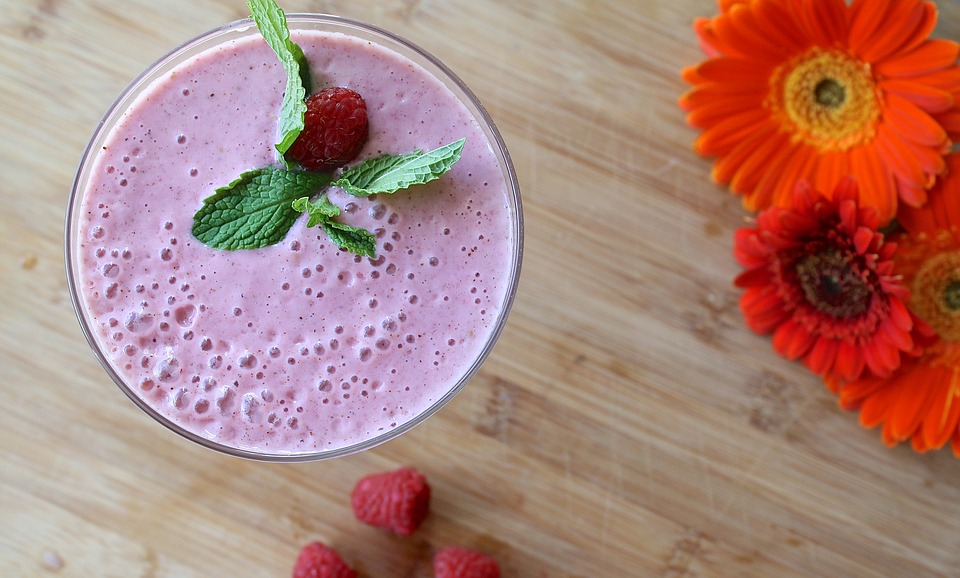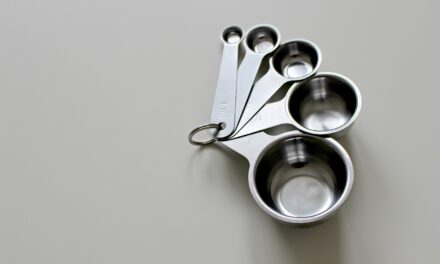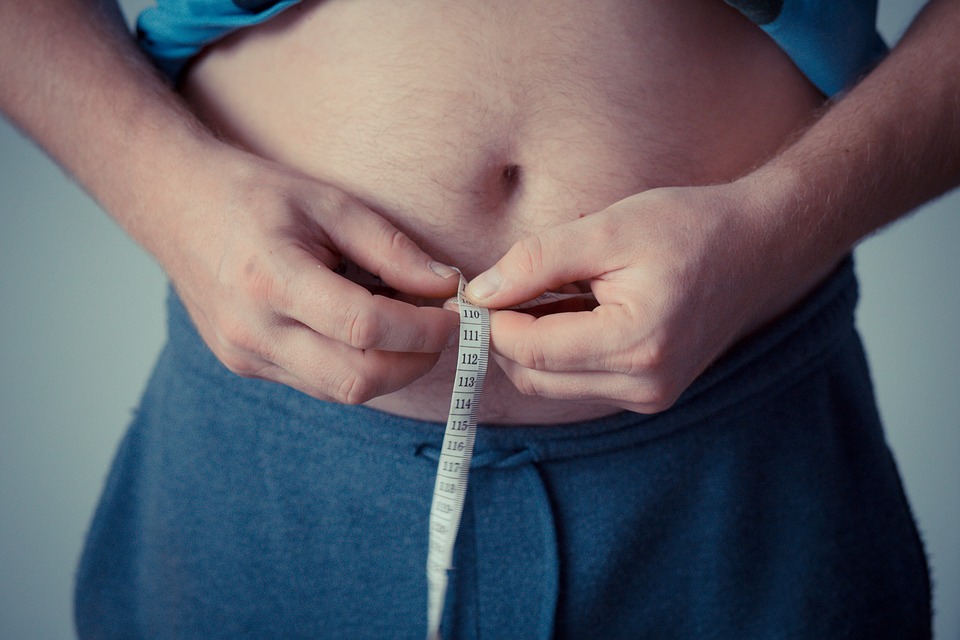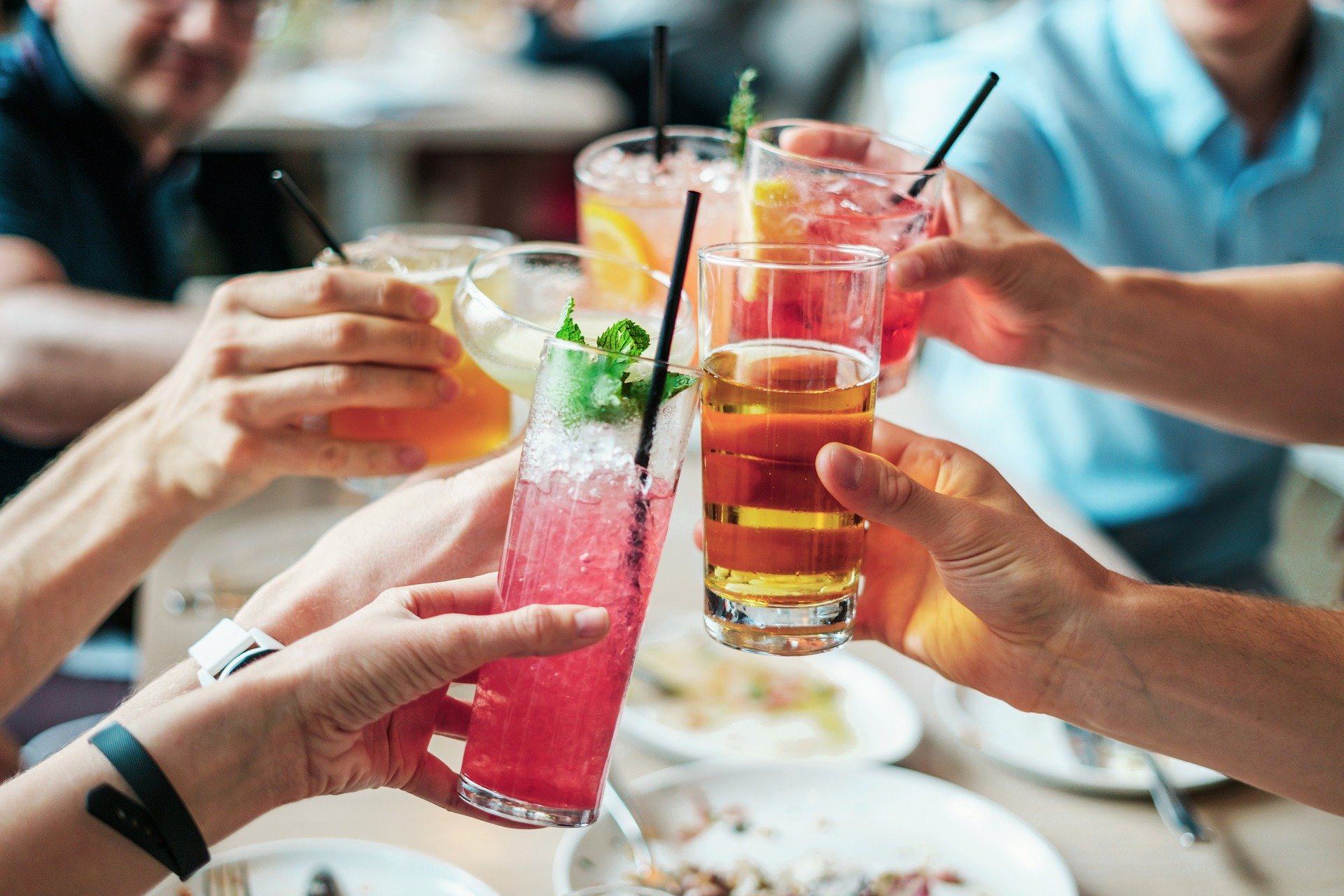This post may contain affiliate links, and as an Amazon Associate, Hercules Performance may earn from qualifying purchases.
Believe it or not: weight loss is a crappy goal for most dieters.
Weight loss includes muscle, water, gut content (like undigested food), waste, and more. In other words, losing weight may not move the transformation needle. What we’re really after is fat loss—which transforms your body much more.
And to lose fat, specifically, you need to (A) strength train, (B) sleep well, and (C) get enough protein—which you’re about to learn how to do. At which point, you can expect to:
→ Maintain more muscle
As mentioned, protein is a “muscle-sparing macronutrient,” meaning it prevents muscle loss when you’re dieting. This makes your body fat percentage drop MUCH more quickly. Let’s use a specific example:
Person A loses ten pounds in two months and doesn’t get enough protein. If six of these are fat and four of these are muscle, they might reduce their body fat percentage by ~1.7%.
Person B loses ten pounds in two months and prioritizes protein. If eight of these are fat and two are muscle, they might reduce their body fat percentage by ~3%. Visually, this is a BIG difference.
So even though they’re both down ten pounds, Person B will look noticeably leaner, and Person A will need to diet even longer to reach the same goal.
(I don’t know about you, but I don’t enjoy dieting a second longer than I need to.)
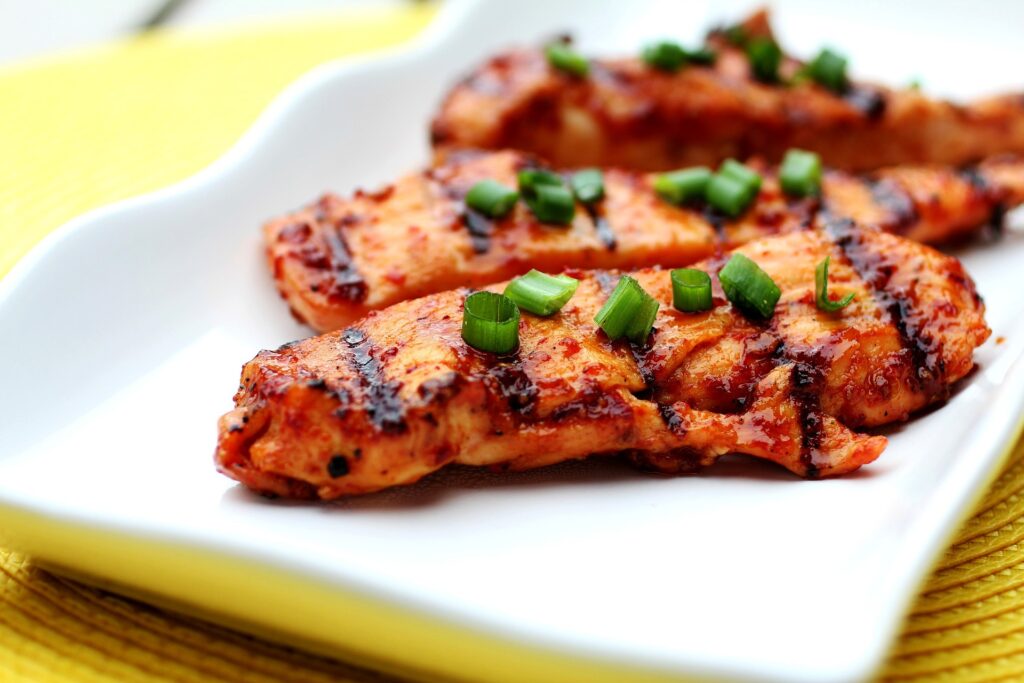
Don’t worry: you won’t have to eat pounds of dry chicken to get more protein
→ Stay more full
Protein is the most filling macronutrient, meaning it wards off hunger better than carbs and fats. This makes it a no-brainer to prioritize, as feeling hungry all the time is one of the main reasons we crash and burn. It’s miserable and exhausting.
→ Burn more calories
This happens both directly and indirectly.
The direct burn occurs during digestion, when the body burns calories while breaking down food (thermic effect of food). And, while not magical, a higher protein diet burns more calories than low protein diets, as it’s harder for the body to break down than carbs and fats.
The indirect burn occurs through long-term muscle retention, as muscle is a more “metabolically active” tissue than fat—meaning you burn more calories (at rest) when you have more of it.
So how much do we really need?
You’ll find this more hotly contested than 95% of internet debates, with uninformed vegans insisting a handful of cashews gets the job done, and equally uninformed meatheads claiming you need a flock of chickens for personal use.
Per usual, the answer lies in the middle: with .8 grams per pound being the sweet spot.
This is enough for muscle retention (goal number one when dieting) and satiation (staying full), but not so much you’re forced to spike your water with egg whites. Here’s a cheat sheet:
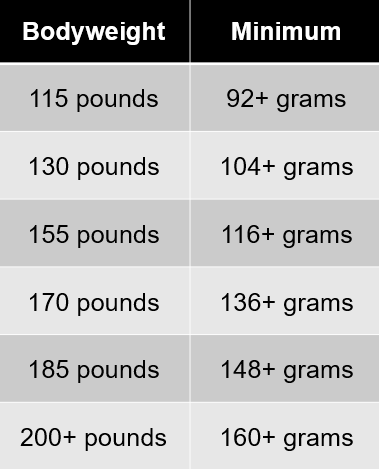
In general, I cap my minimum recommendations at 120+ grams for women, and 160+ grams for men. This is because going even higher offers little upside for regular people who don’t want to eat chicken breasts in their sleep.
That said, if you have a hard time staying full, exceeding your minimum goal and aiming for 1+ grams per pound of bodyweight might make sense.
———
No matter your protein minimum, or reason for increasing intake, here are the ten best ways to approach it:
1) Learn the best sources
If your idea of protein includes an egg with breakfast, or an afternoon protein bar: I’m talking to you. These are fat and carb dense and NOT good protein sources. To understand why, we need to understand macronutrient profiles—which is the breakdown of carbs, fats, and proteins in a food.
A whole egg’s “profile” consists of:
• 70 calories
• 0 carbs (0 calories)
• 5 fat (45 calories)
• 6 protein (24 calories)
This means just 34% of a whole egg’s calories come from protein. Whereas an egg white has:
• 16 calories
• 0 carbs (0 calories)
• 0 fat (0 calories)
• 4 protein (16 calories)
Obviously, this makes egg whites a better source of protein, with 100% of its calories coming from protein. Other examples of lean proteins (with minimal carbs and fats) include:

Again, many popular “protein sources”—like eggs, protein bars, yogurt, and nuts—aren’t listed because they’re non-lean. But they’re still important:
2) Learn the next best sources
Lean proteins (mentioned above) should make up ~75+% of protein intake—otherwise, you’ll have a hard time keeping calories low and protein high. But non-lean proteins—like eggs and protein bars—can fill the gaps until your minimum is met.
“But Sam… I thought you just said eggs were bad?”
No, I said they weren’t good sources of protein. This doesn’t mean they don’t offer any protein. And non-lean sources (that offer primarily carb and fat calories) often do offer protein:
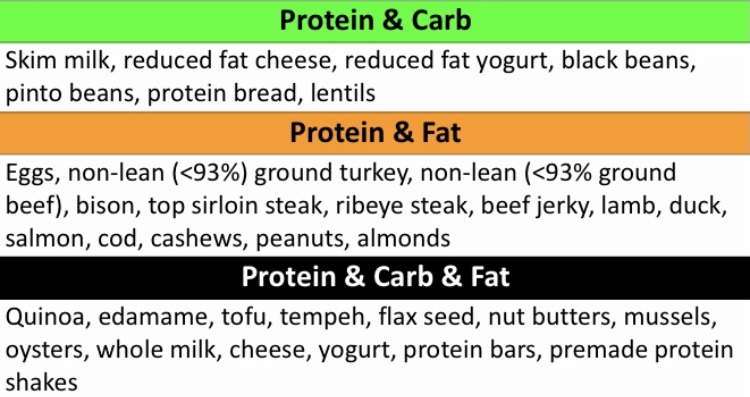
As you can see, this is where vegan and vegetarian sources fall—which is why I recommend lower-than-usual minimums (like .6+ grams per pound of bodyweight) for vegan and vegetarian clients.
3) Plan (much) better
The reason people find it difficult to increase protein intake isn’t because it’s actually hard. After all, you know exactly where to get it (especially after reading this). It’s because most lean sources aren’t convenient to eat. Nobody leaves boxes of grilled chicken breasts in the cupboard or fried egg whites on the counter.
The most readily available foods are carb and fat dense, and we gravitate toward these because they’re convenient.
So you don’t stand a chance at increasing intake if you continue winging your nutrition. You need to sit down and picture a high protein day. My clients go as far as planning nutrition a day in advance, which may sound intense—but it’s akin to establishing a budget while getting out of debt. Success doesn’t happen by accident.
———
A good plan consists of:
• 2-3 lean sources
• 2-3 secondary sources
• 1 liquid source
• 1 snack (optional)
Here’s what this could look like:
Meal 1: eggs (secondary source) and egg whites (lean source) and a protein smoothie (liquid source):
Meal 2: 93/7 ground beef (lean source) with black beans (secondary source) and stir fry vegetables and rice
Snack: low fat cheese stick (secondary source) and an apple
Meal 3: chicken parm (a splurge source with tag-along carbs and fats)
Depending on your portions, this easily gets you 120-160+ grams of protein (without breaking the calorie bank).
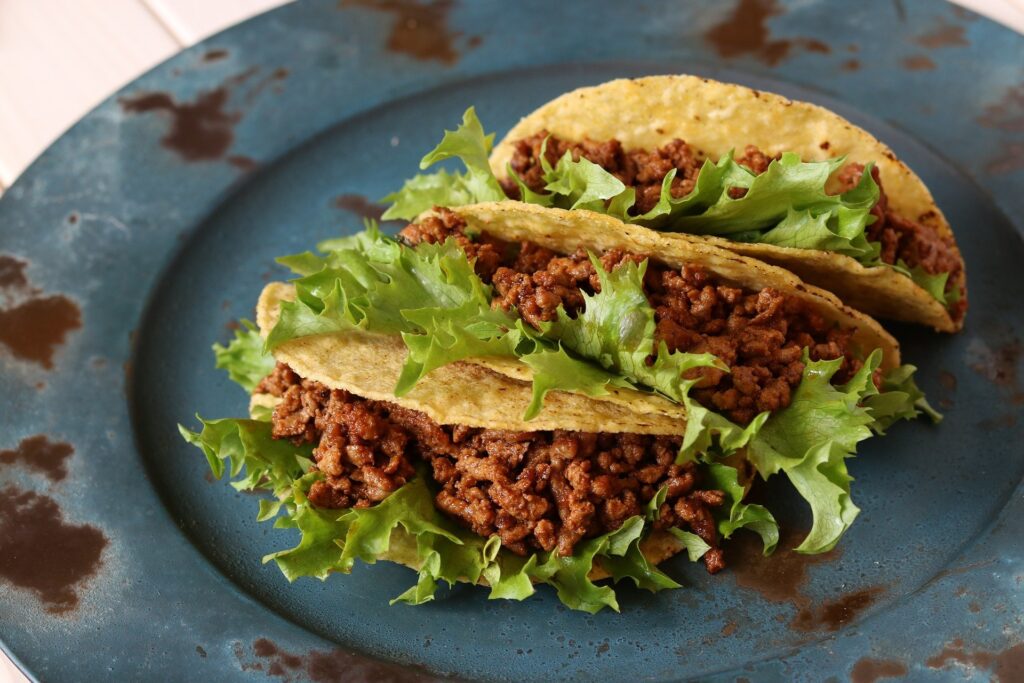
Many of my clients have high protein tacos on a regular basis
4) Actually prep
In many cases, meal prep isn’t necessary if you plan ahead (typically in MyFitnessPal). When you know exactly what you’re supposed to make, and how it’ll help you reach your targets, you’ll be more likely to cook as you go.
That said, meal prep IS a great way to reduce friction between you and protein sources. Imagine coming home from a long day at work, opening the freezer, and seeing Ben & Jerry’s next to a package of frozen chicken.
Which one are you going to choose 99.9% of the time?
Prepping in advance eliminates friction and makes it easier to increase intake. Not to mention, it doesn’t have to be as intense as you think. You don’t have to spend your Sunday’s grilling fourteen pounds of dry chicken. Here’s a much better way:
✓ Schedule two meal prep sessions per week. One on Sunday (for Monday to Wednesday’s meals), and one on Wednesday (for Thursday to Saturday’s meals).
✓ Pick two protein sources per prep session. For example, egg white puffs with stir fry vegetables, grilled chicken (a classic), or ground beef with peppers and taco seasoning.
✓ Cook enough for three days. After 2-3 weeks of tracking your calories, you’ll know how much you need to get you through the week.
✓ Consider prepping sides, as well. Rice, black or pinto beans, pre-weighed nuts and protein powder, and chopped vegetables come to mind.
And so there’s no confusion: these won’t be A+ meals. They’ll range from a C+ to B, if you get decent at them. But not every meal needs to be a celebration, or TV-worthy. Sometimes they just need to check a box without overwhelming you.
If you take issue with this, plan to prepare every meal on the spot. If you don’t like this, use a meal prep service. If that’s too expensive, you’re back to planning and prepping. You can’t refuse EVERY strategy for increasing protein and expect things to magically improve.

Not every prep sessions needs to involve cooking. Sometimes portioning snacks in advance makes a lot of sense
5) Vary how you prep
If you’re grilling chicken with nothing more than salt and pepper, you’re going to hate the flavorless hockey pucks you have in your fridge hours later. If you want to make prep a habit, you need to vary your prep style. For example, chicken can be:
→ Grilled
→ Baked
→ Put in a crock pot
→ Air fried
→ Pan-fried
You can season it with little-to-no calorie options like:
→ Salt
→ Black pepper
→ Crushed red pepper
→ Paprika
→ Roasted garlic and herbs
→ Cumin
→ Taco seasoning
→ Chili powder
→ Basil
→ Hot sauce
These alone offer 50+ combinations for prepped chicken.
———
My go-to prep tools include:
→ My air fryer (HERE)
I used to think “air fryer people” were culty, but now I’m drinking the Kool-Aid. No joke, my wife and I use ours 10+ times per week, and not just for protein sources. We make vegetables, French fries, potatoes, and more. Since there’s no preheating (like an oven or pan), healthy meals are a breeze to make.
→ My George Foreman grill (HERE)
While this countertop grill won’t impress anyone’s macho, master-of-the-grill uncle, it cooks a pound of meat in minutes—and I know which I’d prefer. Not to mention, it’s affordable and takes up minimal space.
→ My McCormick seasoning (HERE)
I know this isn’t a “tool,” per say, but it’s zero calories, cheap, and delicious. I use it on chicken, ground beef, ground turkey, steak, and most other meals.
6) Increase your portions
In high school, I remember sleeping over a friend’s house whose mother was “warned” about my appetite. When I came downstairs, she was nice enough to prepare eggs for us, and gave me three eggs to “fill me up.”
Little did she know, I was having 8-12 eggs most mornings.
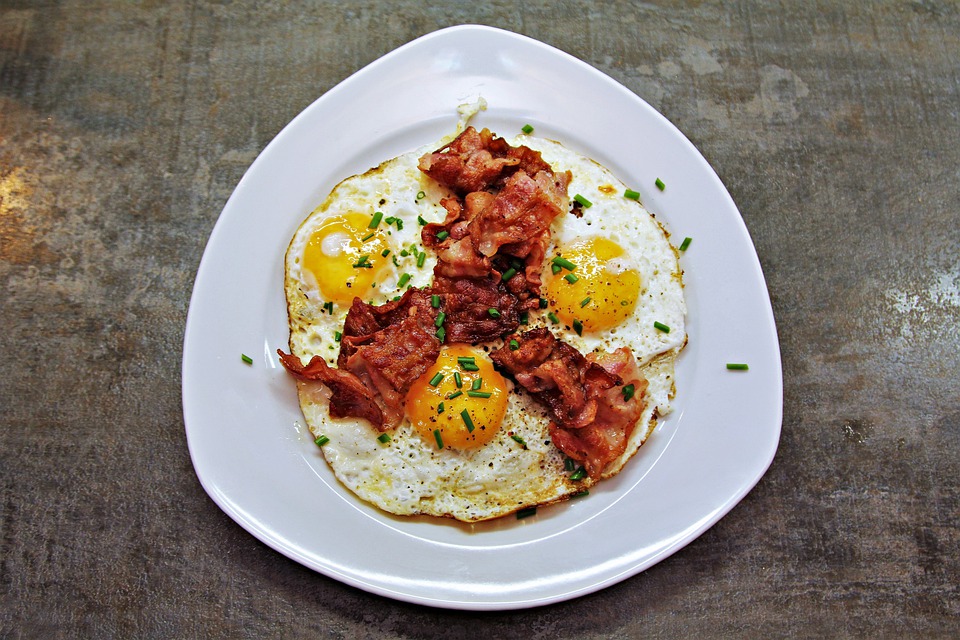
And while you don’t need to be as extreme as high school Sam, you do need to be open to bigger-than-usual portions:
• 1-3 eggs and 2-5 egg whites
• 7-8+ ounces of chicken
• 7-8+ ounces of beef or turkey
• A 16+ ounce protein shake
Again, you might consider these large, but they’re fewer calories than the average milkshake-of-a-coffee order most people place every morning. You can’t be selective with perspective.
7) Eat better snacks
In general, snacking is a horrible idea for people with transformation goals. It’s like swiping your credit card for small purchases all the time, then wondering how on earth your debt got so massive. That said, if you’re going to do it (as most people do), you may as well have snacks that offer some protein:
• Greek yogurt
• Cottage cheese
• Hard-boiled eggs
• Homemade smoothies
• Low-fat cheese sticks
• Beef jerky
• Pistachios
You’ll notice protein bars (the most popular recommendation) aren’t on this list. This is because most of them have the macronutrient profile of a candy bar.
If you are going to have one, though, I recommend it be Rise Bars (HERE), which aren’t overly high in protein, but have better ingredients than junk you’ll find at the convenience store.
8) Have a shake or smoothie every day
While “boring” to some, it’s an easy way to put a dent in your protein minimum—although I don’t recommend getting more than 25% of your daily protein intake from supplementation (which includes powders AND bars). It’s a dead giveaway you’re not getting enough whole food.
For reference (“Supp” is supplementation):
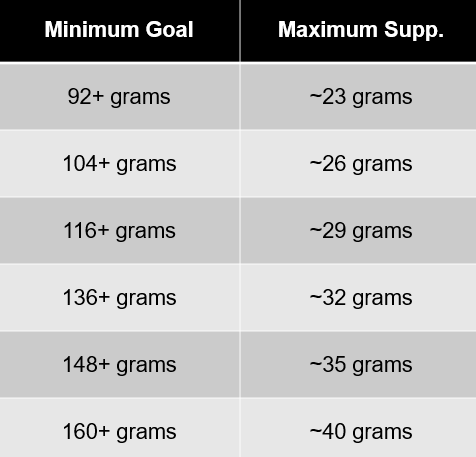
When making your shakes and smoothies, get a whey isolate or pea protein powder. I personally get mine from True Nutrition (HERE), which is dairy-free and easier on my stomach than whey isolate.
Here’s my favorite shake:
• 240 milliliters of chocolate almond milk
• 120 milliliters of water
• 3-4 ice cubes
• A small handful of spinach
• 100 grams banana
• 37 grams of chocolate peanut butter pea protein
(320 calories and 35 grams of protein)
Here’s my favorite smoothie:
• 240 milliliters of vanilla almond milk
• 120 milliliters of water
• 3-4 ice cubes
• A small handful of spinach
• 100 grams of banana
• 70 grams of frozen berries (any kind)
• 37 grams of vanilla pea protein
(290 calories and ~32 grams of protein)
You’ll notice I list weights, because measuring cups and spoons are inaccurate and a bad idea for dieters looking to maximize results. You need to be weighing your portions, instead.
9) Adding powder to other meals
Consider this icing on the cake, once you’ve mastered the other strategies.
You can add powder to homemade oatmeal, pancakes, baked goods, coffee, and more. In none of these cases should the portions be massive, or you might ruin the taste or texture. As little as 10-15 gram’s worth is adequate alongside your main sources.
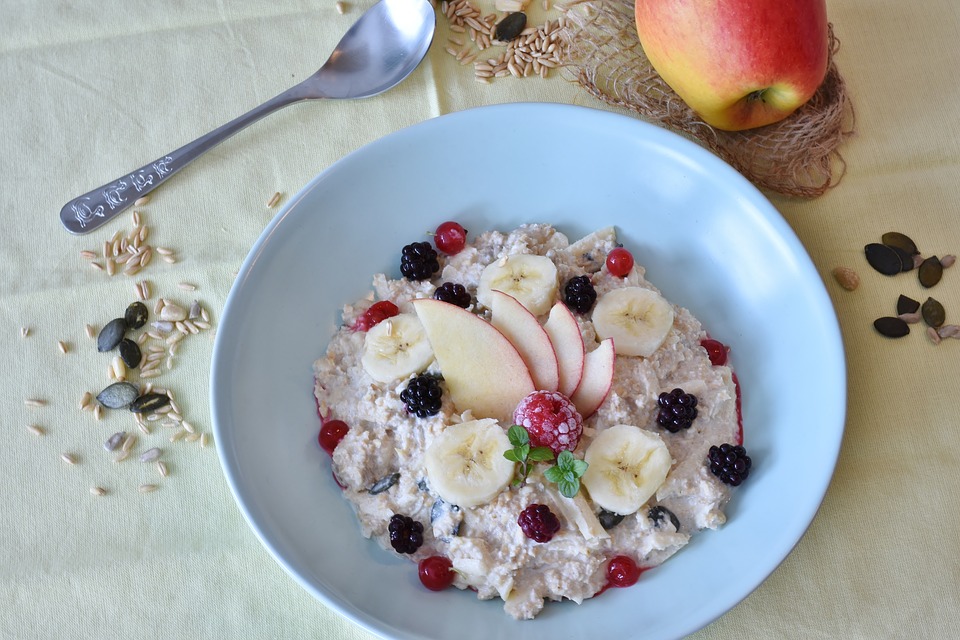
Homemade protein oatmeal with fruit is a go-to breakfast of mine
10) Let someone else handle it for you
If you refuse to plan or prep, you might consider outsourcing the “hassle” to a professional. There are tons of meal prep services that’ll prepare and package all the high protein meals you need, so you can focus on things besides cooking.
Naturally, the most common obstacle here is price. But there are currencies besides cash, and your time, energy, and health are worth immeasurable amounts—so in many cases, spending $8-$12 per meal is a no-brainer investment. Imagine getting home from work, knowing there was a healthy meal waiting for you? What a weight off your shoulders.
———
The prep services I recommend are:
→ Nutre Meals
→ Trifecta
Admittedly, I discourage most clients from using HelloFresh, as it’s low protein* (relative to calories), not as healthy as they claim, and time-consuming (90% of the time). The primary benefits are pre-portioned meals and clear cooking instructions.
*With occasional exceptions on their “dieting” menu.
Now what?
To recap, here are the ten best ways to get more protein:
1) Learn the best sources
2) Know the next best sources
3) Plan (much) better
4) Actually prep
5) Vary how you prep
6) Increase your portions
7) Eat better snacks
8) Have a shake or smoothie
9) Adding powder to other meals
10) Let someone else handle it
But I don’t want you stopping here.
Getting enough protein is just one part of the nutritional puzzle. You need to make sure the carbs and fats you’re consuming are high quality, too.
To help you with this, I’ve giving away copies of my Approved Foods List: the EXACT grocery list I give my clients. When you request a copy, you’ll find all the protein sources you learned here, along with other foods you need to be eating:

